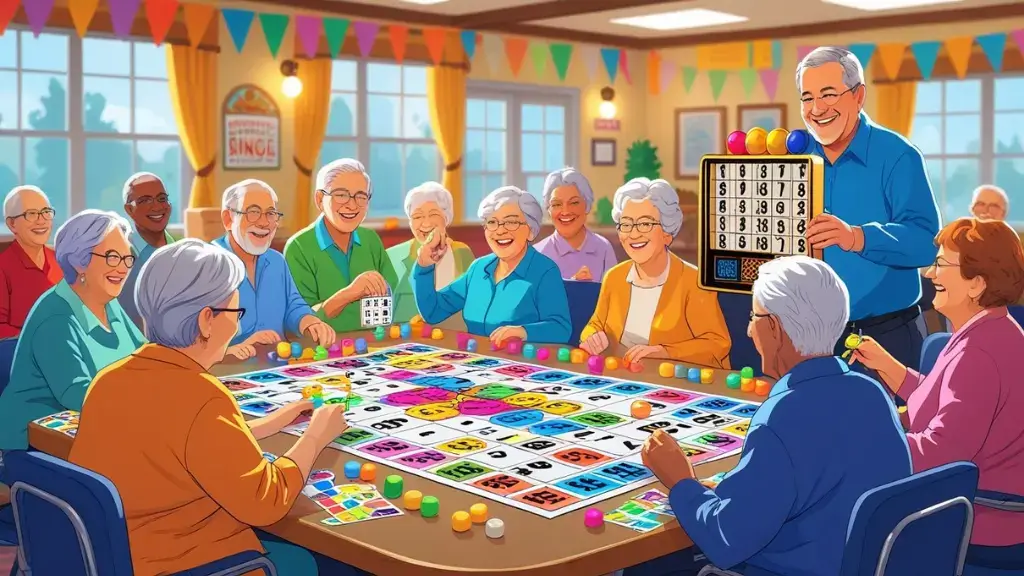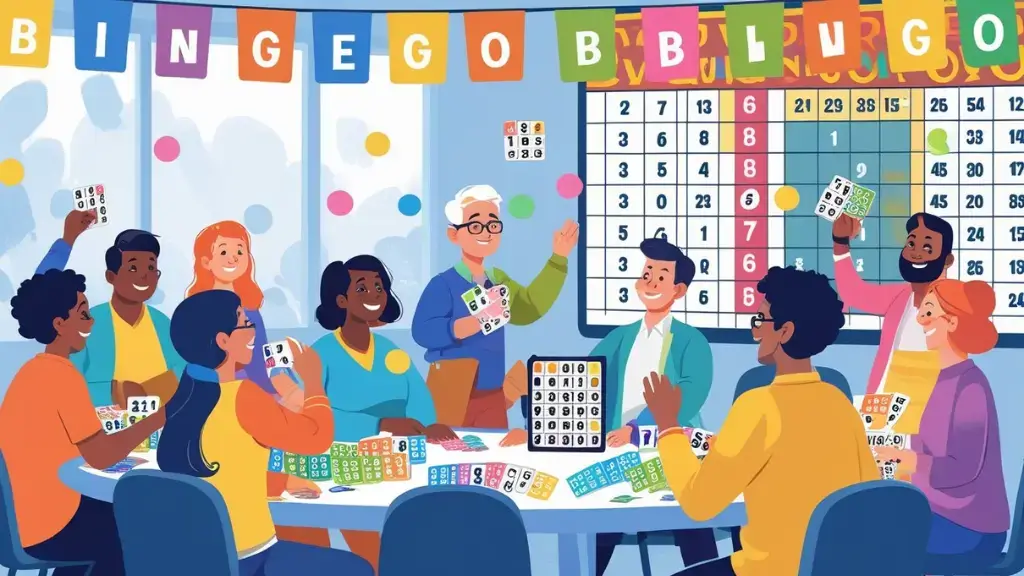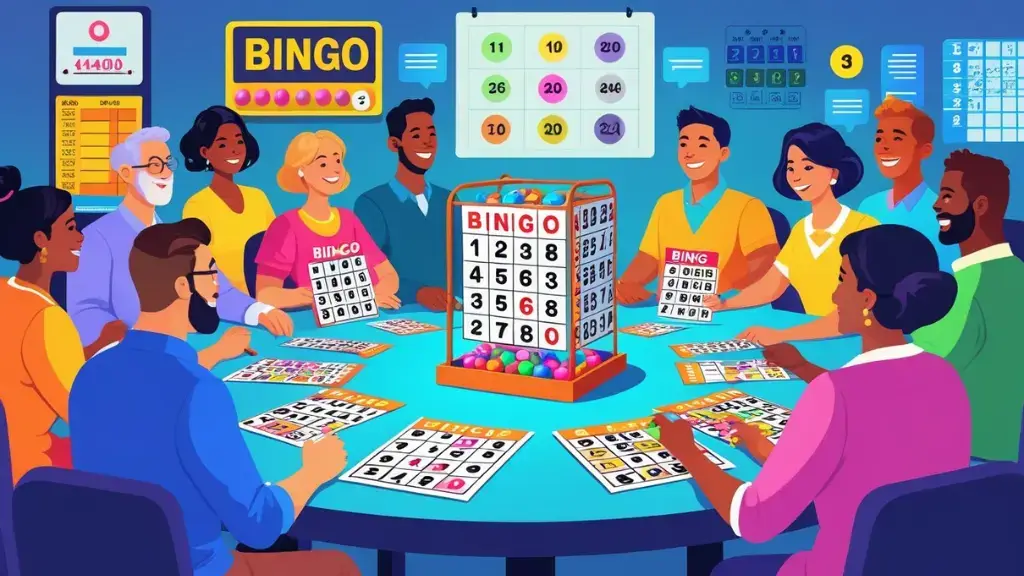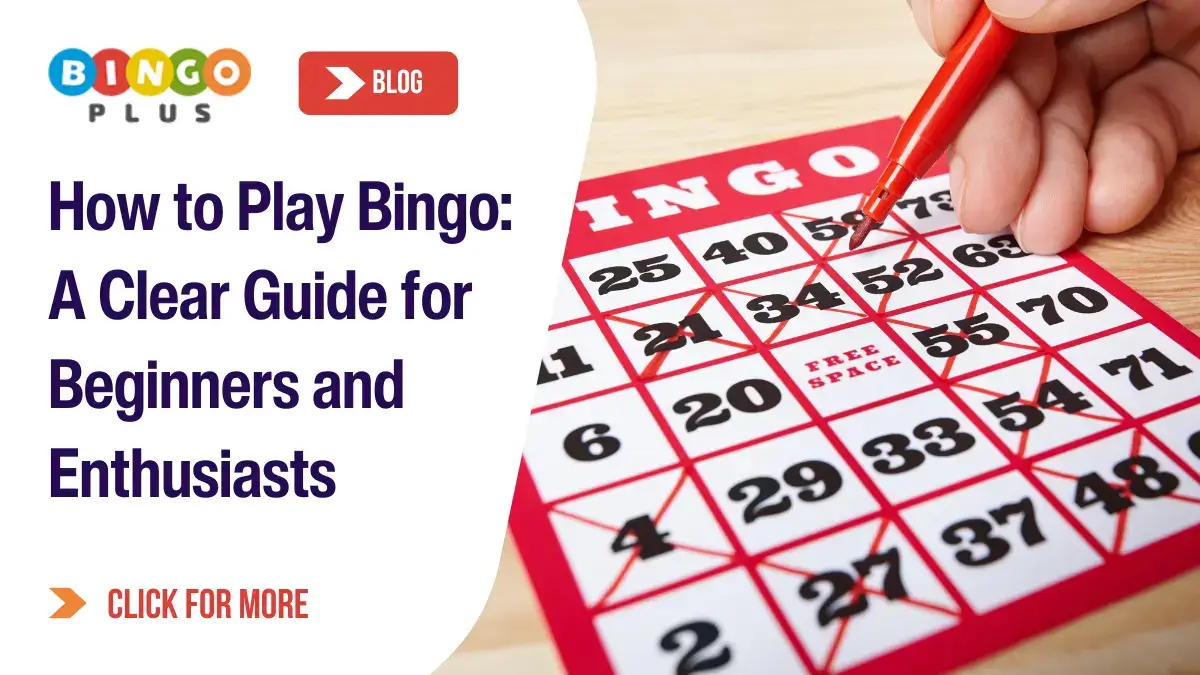Bingo is a simple yet engaging game that anyone can learn and enjoy. At its core, the objective is to mark off numbers on your card as they are randomly called out, aiming to complete a specific winning pattern before anyone else. Understanding the basic rules and recognizing winning patterns quickly are key to playing bingo effectively.

We can play bingo in many settings—from community centers and parties to online Bingo platforms that make the game accessible anytime. The game combines luck with attention, which keeps it exciting and social. Learning how to play well also involves using strategies to increase our chances of winning.
By knowing how to participate, where to find games, and tips for success, we can make every bingo session more enjoyable and rewarding. The following sections will guide us through everything we need to know to get started and improve our play.
Key Takeways
- Bingo involves marking off numbers to complete a winning pattern.
- The game can be played in multiple settings, including online.
- Understanding rules and strategies helps increase our chances of winning.
Bingo Rules and Gameplay

We need to understand how the game is structured, how the cards are set up, and the sequence of play to follow the game correctly. Each part defines how we track progress and determine the winner.
Basic Rules of Bingo
Our goal is to complete a specific pattern on a bingo card, often a line, diagonal, or full-house, depending on the game variant. Numbers are called aloud randomly, and we mark them if they appear on our card.
We must watch carefully for called numbers and mark them immediately. The first player to complete the required pattern shouts “Bingo!” to claim a win. An official or automated system verifies the card before declaring the game over.
Bingo Card Layout
Each bingo card features a 5×5 grid with 25 squares. The top row spells out B I N G O, with each column containing numbers from specific ranges:
| Column | Number Range |
|---|---|
| B | 1 to 15 |
| I | 16 to 30 |
| N | 31 to 45 |
| G | 46 to 60 |
| O | 61 to 75 |
The center square is usually a free space that counts as already marked. We use the card layout to spot numbers quickly and verify winning patterns.
Gameplay Flow
A caller selects numbers randomly, often using a ball machine or digital generator. After each number, players check their cards and mark matching numbers.
The game continues with calls and marking until someone completes the winning pattern. At that moment, players stop marking to confirm the winner. The verification process involves checking the marked squares against called numbers.
Once confirmed, the game either ends or resets for another round. We follow this cycle to keep gameplay organized and fair.
Strategies and Tips for Playing Bingo

To improve our chances in bingo, we focus on selecting the right cards, adopting effective playing methods, and managing our budget carefully. These elements help optimize both our gameplay and overall experience.
Choosing Your Bingo Cards
Selecting bingo cards strategically can impact our odds. We prefer cards with a variety of numbers spread evenly to cover more possible calls. Playing multiple cards increases chances but requires careful attention to avoid missing numbers.
We also look for games with fewer participants. Fewer players mean less competition, giving us a higher probability of winning. Choosing less crowded sessions or early game times can improve our success rate.
It’s important not to overload ourselves by playing too many cards at once. We balance the number of cards with our ability to track them effectively, ensuring we stay alert throughout the game.
Effective Playing Techniques
Staying focused throughout the game is crucial. We mark numbers promptly and double-check cards to avoid mistakes. Using tools like daubers enhances speed and accuracy.
Covering key patterns, such as corners or the X, can increase winning options. Some players suggest reserving special markers for these areas to secure lines faster. We monitor the board carefully to spot these opportunities.
Playing at sessions with consistent calling speeds helps us keep pace. Slower or irregular calls can disrupt our rhythm, so we choose games that match our playing style.
Managing Your Budget
Setting a budget before playing helps control spending and keeps the game enjoyable. We decide on a fixed amount for tickets and stick to it, avoiding chasing losses.
Buying tickets in smaller increments across multiple games spreads risk better than spending all at once. This approach lets us participate longer and increases exposure to potential wins.
Tracking past expenses and winnings helps us evaluate our playstyle and adjust spending if necessary. Budget discipline ensures the game remains entertainment, not a financial strain.
Where and How to Play Bingo Online
Playing bingo online offers many options, from free games for fun to real money opportunities. To play safely and enjoyably, we need to pick trustworthy platforms, understand how money games work, and follow security best practices.
Finding Reputable Bingo Platforms
We should look for bingo sites with strong user reviews, clear licensing information, and transparent terms. Popular apps like Bingo Plus offer a range of games beyond bingo, including poker and slots, which signals a well-established platform.
Key features to check include:
- User interface clarity and ease of navigation
- Availability of free practice games alongside paid ones
- Customer support responsiveness
- Secure payment methods
Avoid sites with unclear ownership or excessive ads. Also, confirm the platform regularly updates its games and software to prevent glitches during play.
Understanding Online Bingo for Money
When playing bingo online for money, we must first know the wagering requirements and payout rules. Casinos and platforms often set minimum deposits and withdrawal limits, which vary significantly.
We should always:
- Read the terms for bonuses or free bingo cards before betting real money
- Know the odds and how winning patterns differ from one game to another
- Monitor betting responsibly to avoid overspending
Platforms advertising “online bingo for real money” should be licensed and regulated to ensure fair play and transparency in payouts.
Safe Practices When Playing Bingo Online
Security is critical when we share personal and financial information. We should only play on sites with SSL encryption to protect data.
Our safety checklist should include:
- Using strong, unique passwords
- Avoiding public Wi-Fi when making transactions
- Verifying official payment gateways
- Keeping software and browsers updated
If a platform offers tools to set deposit limits or self-exclude, we should use them to manage our play responsibly. Never share login credentials or payment details with others.
Frequently Asked Questions
We cover essential details such as the fundamental rules, setting up a game, winning strategies, and variations in gameplay. You will also find guidance on playing bingo in different environments.
Each player gets a card with a grid of numbers. Numbers are drawn randomly and announced. Players mark the numbers on their cards when they match the drawn ones. The goal is to complete a specific pattern, often a line of five numbers in a row, either horizontal, vertical, or diagonal.
Distribute bingo cards to all players. Prepare a method to draw numbers randomly, like using balls or a random number generator. Decide on the winning patterns before starting. Make sure everyone understands the calling format and the prize, if any.
Playing multiple cards can improve chances but requires focus to keep up with calls. Choosing cards with varied number ranges may reduce the chance of overlapping numbers with others. Staying attentive and marking numbers quickly ensures you don’t miss any winning calls.
Replace numbers on cards with images or symbols. The caller announces or shows each picture drawn one at a time. Players mark matching pictures on their cards. The objective remains to complete the pre-agreed pattern for a win.
Players buy or receive bingo cards before the session starts. The caller announces numbers drawn one by one at a steady pace. Players mark the numbers on their cards silently or with chips. When a player completes the winning pattern, they call out “Bingo” to claim the win.
Instead of numbers, cards contain words or phrases. The caller reads or displays these words one at a time. Players match the called words to their cards in the same manner as number bingo. The goal and structure remain consistent with traditional bingo.



